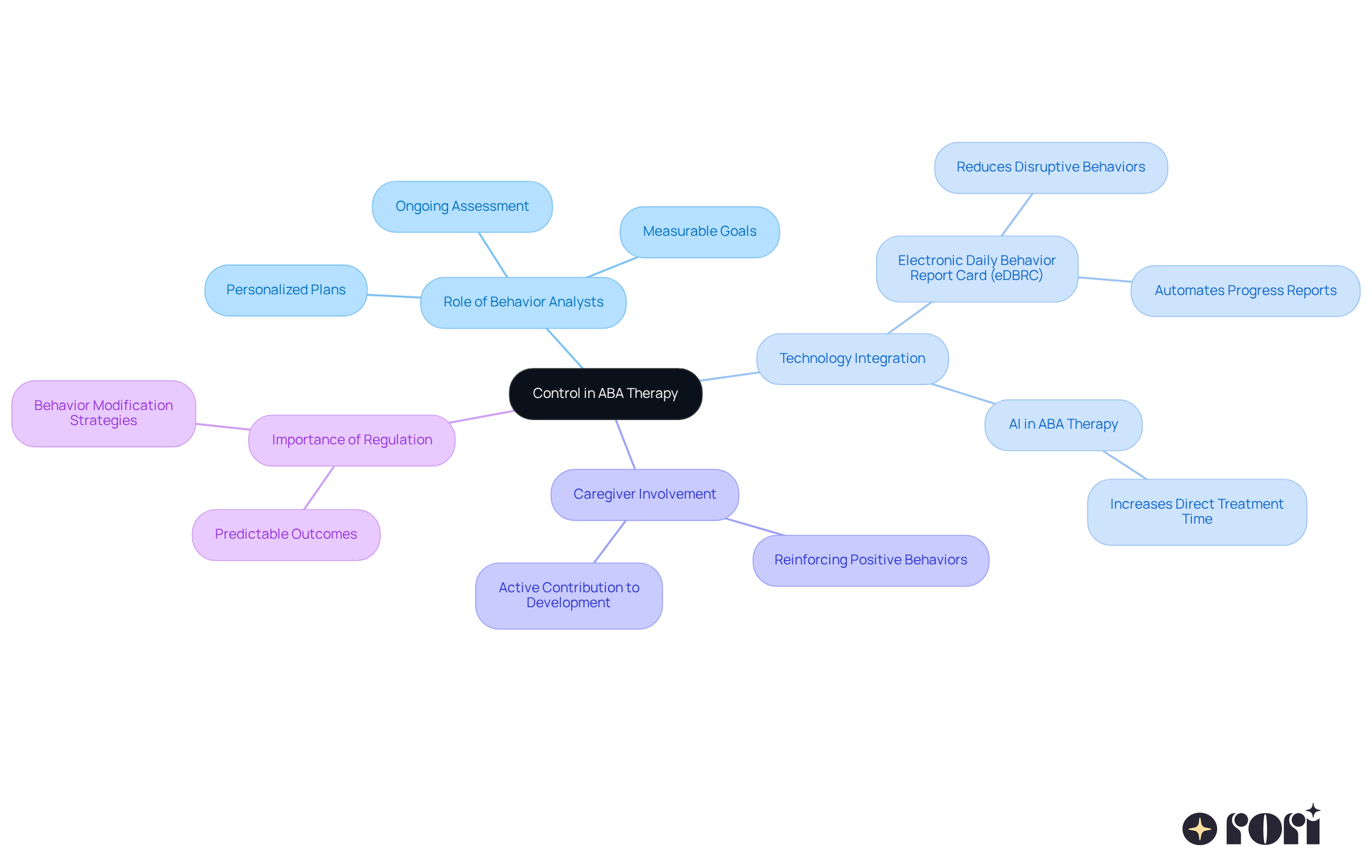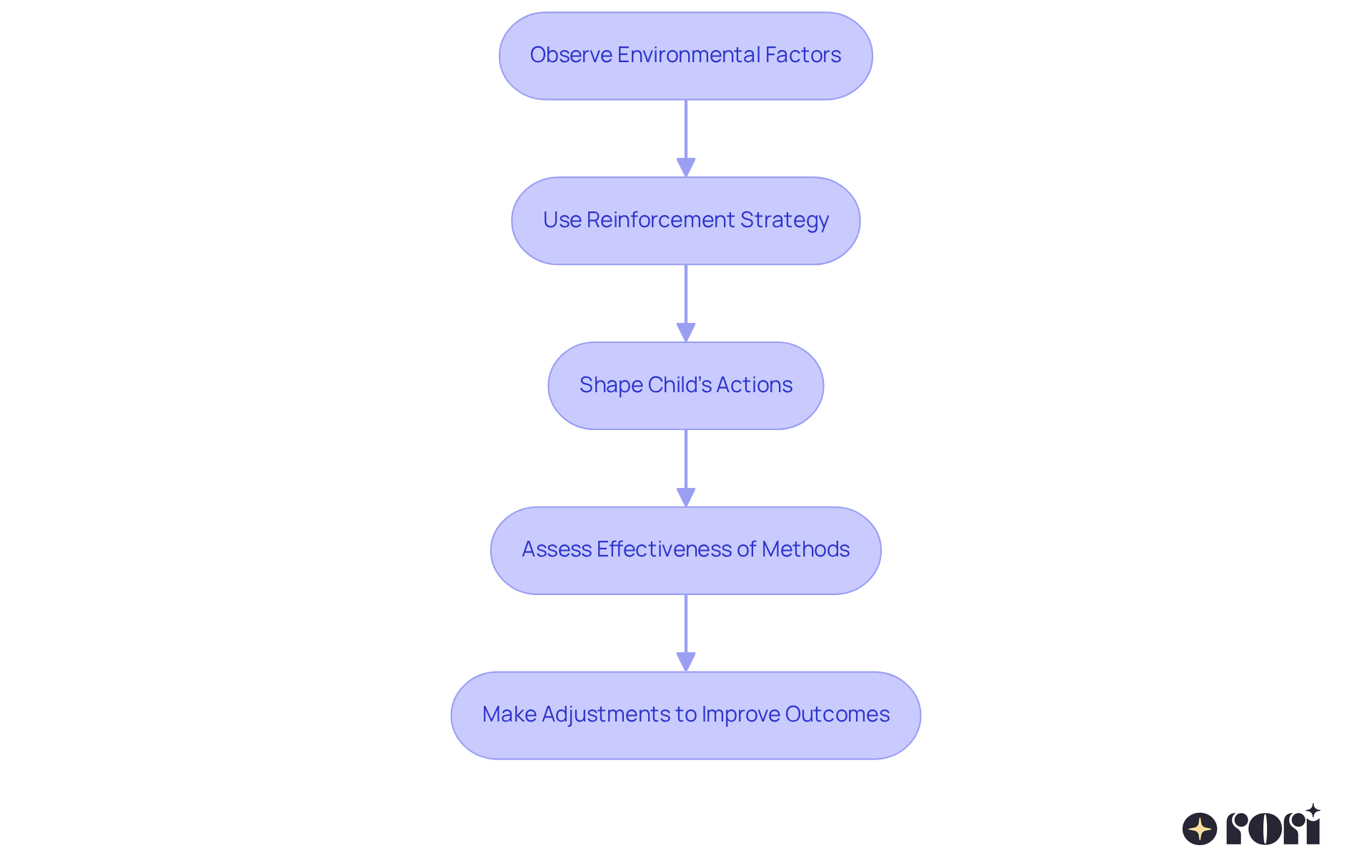This article dives into the concept of control in Applied Behavior Analysis (ABA) therapy, which is all about the ability to influence and manipulate variables to effectively predict and change behaviors. It’s a foundational idea for practitioners, helping them assess and adjust interventions based on measurable outcomes. This ensures that children receive personalized and effective treatment.
Let’s explore this together! Understanding how control works in ABA can really help you as a parent. It’s about making sure that the strategies used are tailored to your child’s unique needs, which is so important in fostering their growth. Knowing that professionals can adjust their approach based on what works best for your child can bring a sense of relief and hope.
We’re here to help you every step of the way as you navigate this journey. Remember, the goal is to create a supportive environment where your child can thrive!
In the world of Applied Behavior Analysis (ABA) therapy, understanding control is super important for making positive changes in behavior. This idea not only helps practitioners create tailored interventions that bring real results but also makes the therapeutic experience better for children. But here’s the thing: figuring out how this control works in practice can be a bit tricky, and it has some big implications for both therapists and caregivers.
So, what can we learn from the complex relationship between control and behavior? And how can this knowledge change the way we help our children thrive? Let’s explore this together! We’re here to help you every step of the way!
In Applied Behavior Analysis (ABA) therapy, the concept of control aba definition pertains to the ability to influence and manipulate variables to predict and change behaviors effectively. When certain actions consistently lead to noticeable changes in behavior, we see the power of that action in action! This principle is key in ABA, helping practitioners evaluate how well their strategies and interventions are working. The control aba definition serves as the gold standard in understanding behavior, where we systematically tweak independent variables to see how they affect dependent ones, confirming their relationship.
A qualified behavior analyst plays a crucial role here, crafting personalized plans that include measurable goals and evidence-based strategies tailored to each child’s unique needs. This individualized approach not only boosts the effectiveness of strategies but also ensures ongoing assessment and adjustments, allowing for responsive changes as needed. Continuous assessment is vital for adapting strategies to meet the ever-changing needs of the child.
Plus, the integration of cutting-edge AI technology in ABA therapy is a game changer! By automating progress report generation, Rori Care - ABA Therapy can free up to 50% more time for direct child treatment. This means analysts can focus more on implementing strategies that encourage positive behavior changes and skill development, ultimately benefiting the child’s growth.
Experts highlight the control ABA definition, pointing out how crucial regulation is in behavior modification, as successful ABA strategies depend on creating predictable outcomes. For instance, research shows that tools like the Electronic Daily Behavior Report Card (eDBRC) can significantly reduce non-compliant and disruptive behaviors in students with autism spectrum disorder and intellectual disabilities. This real-world application illustrates how regulation in ABA not only boosts modification statistics but also fosters positive learning environments.
Additionally, empowering caregivers with ABA principles and strategies is essential for supporting children’s behavioral goals. When caregivers get involved, they can actively contribute to their child’s development and reinforce positive behaviors at home.
Ultimately, the control aba definition underscores the immense importance of regulation in ABA interventions, as it serves as the foundation upon which effective modification strategies are built. This ensures that practitioners can adjust their approaches to meet each child’s unique needs. Let’s explore this together!

The control ABA definition isn’t just an abstract concept; it’s a practical tool that clinicians use to influence behavior in real ways. Think of it like this: within the ABA framework, therapists observe and adjust environmental factors to help children thrive. For instance, when a therapist uses a reinforcement strategy, they’re actively shaping the elements that impact a child’s actions.
This approach allows therapists to create structured environments where positive behaviors can be taught and encouraged. The control ABA definition emphasizes that the ability to exert control is vital for effective behavior modification. It helps practitioners assess how their methods are working and make necessary adjustments to improve outcomes.
Let’s explore this together! By understanding how control in ABA works, you can feel more empowered in supporting your child’s development.

The concept of regulation in ABA has its roots in the early 20th century, thanks to the rise of behaviorism and the pioneering work of B.F. Skinner. His research on operant conditioning laid the groundwork for understanding how we can influence actions through reinforcement and punishment. Over the years, the control ABA definition has evolved, incorporating insights from various studies that highlight the importance of regulation in behavior modification.
You might find it interesting that the idea of regulation became even more solidified with the introduction of functional analysis. This approach systematically explores the relationship between behavior and environmental factors, which aligns with the control ABA definition, making it a key principle in effective ABA practices. Understanding this historical context can really highlight how regulation serves as a cornerstone for helping children thrive in their behaviors. Let’s explore this together!

When it comes to Applied Behavior Analysis (ABA), control is all about a few key characteristics: predictability, reliability, and the ability to manipulate variables. Predictability means that when we take certain actions, we can expect reliable results, helping therapists anticipate behavior changes. Reliability is just as important; it assures us that the same approach will yield similar outcomes, whether we’re working with different individuals or in various settings.
Now, let’s talk about the ability to manipulate variables. This is crucial! Therapists need to adjust environmental factors—like reinforcement schedules or prompts—to get the behavior outcomes we’re aiming for. These traits show us that the control ABA definition isn’t just a theoretical concept; it’s a practical tool that really boosts the effectiveness of ABA strategies.
By creating individualized plans and setting measurable goals, behavior analysts can customize interventions to meet each child's unique needs. This ensures therapy remains adaptable and effective. Plus, with the integration of AI-driven progress report automation, we can continuously evaluate and tweak treatment plans. This not only frees up 50% more time for direct child treatment but also enhances the overall efficiency of ABA therapy!
This patient-centered approach, paired with evidence-based strategies, ensures that every child’s therapy is effective and responsive to their individual progress. Let’s explore this together! We’re here to help you every step of the way!

The essence of control in Applied Behavior Analysis (ABA) is all about influencing behavior through the systematic manipulation of variables. This foundational idea allows practitioners to craft effective interventions that meet each child's unique needs. It’s not just about using evidence-based strategies; it’s also about being adaptable! By grasping the control ABA definition, behavior analysts can truly foster positive behavior changes and help children reach their developmental goals.
Throughout this article, we've highlighted some key insights, like how important predictability and reliability are in ABA interventions. Plus, integrating advanced technologies, such as AI-driven progress reporting, really boosts our ability to monitor and adjust treatment plans efficiently. And let’s not forget about empowering caregivers with ABA principles; this is crucial for reinforcing positive behaviors at home, creating a nurturing environment for children’s growth.
Ultimately, recognizing the importance of control within the ABA framework is vital for effective behavior modification. This understanding equips practitioners with the necessary tools for success and encourages a collaborative approach that brings caregivers into the therapeutic process. Embracing these principles can lead to transformative outcomes, making a lasting impact on the lives of children and their families. So, let’s explore this journey together! We’re here to help you every step of the way!
What does the term "control" mean in ABA therapy?
In Applied Behavior Analysis (ABA) therapy, "control" refers to the ability to influence and manipulate variables to predict and change behaviors effectively. It involves systematically adjusting independent variables to observe their effects on dependent ones.
Why is control important in ABA therapy?
Control is crucial in ABA therapy as it helps practitioners evaluate the effectiveness of their strategies and interventions. It ensures that behavior modification efforts lead to predictable outcomes, which is essential for successful interventions.
How do behavior analysts utilize control in their practice?
Qualified behavior analysts create personalized plans that include measurable goals and evidence-based strategies tailored to each child's unique needs. They continuously assess and adjust these strategies to respond to the evolving needs of the child.
What role does technology play in ABA therapy?
Technology, such as AI, plays a significant role in ABA therapy by automating tasks like progress report generation. This allows analysts to dedicate more time to direct child treatment, enhancing the implementation of strategies that promote positive behavior changes.
Can you provide an example of how control is applied in ABA therapy?
An example of control in ABA therapy is the use of tools like the Electronic Daily Behavior Report Card (eDBRC), which has been shown to significantly reduce non-compliant and disruptive behaviors in students with autism spectrum disorder and intellectual disabilities.
How can caregivers support ABA strategies?
Caregivers can support ABA strategies by learning and applying ABA principles at home. Their involvement is essential for reinforcing positive behaviors and contributing to their child's developmental goals.
What is the overall significance of the control ABA definition?
The control ABA definition highlights the importance of regulation in ABA interventions, serving as the foundation for effective behavior modification strategies. It ensures that practitioners can adapt their approaches to meet each child's specific needs.